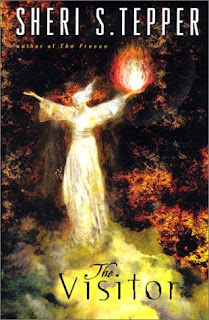For a while now, I've had a couple of Snoopy comics hanging over my computer at home that sum up the writing experience for me. One features Snoopy writing a letter that I've often wanted to write back to publishers. It reads, "Gentlemen, Regarding the recent rejection slip you sent me. I think there might have been a misunderstanding. What I really wanted was for you to publish my story and send me fifty thousand dollars. Didn't you realize that?" I'm afraid my luck probably wouldn't be any better than Snoopy's, though.
But those thoughts on writing are why I got really excited about "Snoopy's Guide to the Writing Life" by Barnaby Conrad and Monte Schulz ($19.99, Writer's Digest Books).
For this book, the authors asked some of the most well-known writers in the world about their favorite "Peanuts" cartoon on writing. Among the contributors are Ray Bradbury, Danielle Steel, Clive Cussler, Sidney Sheldon, Fannie Flagg, Dominick Dunne, William F. Buckley Jr., Sue Grafton, Ed McBain, Julia Child, Elmore Leonard and more.
The bits from the writers are often interesting, sometimes infuriating. Some, like best seller Steel, made me groan. She goes on and on about how tough the writing life is. I wanted to say, "If it's so bad, surely you've made enough money to quit."
But most are a bit more light-hearted. They're funny, humble, even inspiring. Take for instance Flagg's tale of how she became a writer. Her joy in the act of writing shines through the essay. Others, like Bradbury, recount tales of the bumps and potholes on their road to success, and express their gratitude that they're able to make a living at something they love.
But the real star of the book, as we all know, is Snoopy. My favorites are his takes on rejection slips. Anyone who has started a collection of those little multi-colored slips of paper can understand Snoopy's frustration. Those insidious little phrases like "not right for us at this time" or "doesn't meet our present needs," translate to something more like "you stink" in the mind of the aspiring writer.
One particular cartoon - one of the ones that hang on my desk - cuts to the heart of it. It shows Snoopy retrieving a rejection from the mailbox. It reads, "Dear Contributor, Thank you for considering us with your manuscript. Has it ever occurred to you that you may be the worst writer in the history of the world?" I've certainly gotten a couple of letters that made me feel that way.
It works the other way too, though. There's one strip where Snoopy gets an acceptance, of a sort. It says, "Dear Contributor, Thank you for not sending us anything lately. It suits our present needs." I know there are a few editors out there who have wanted to send me that one.
I was disappointed that I didn't see one of my favorites in this book. It's the final one of the three next to my computer. Snoopy receives a letter that reads, "Dear Son, Thank you for considering us with your letter. We regret, however, that it does not suit our present needs. Sincerely, Mother." The final frame shows Snoopy sitting dejectedly on a rock, thinking, "Even my letters home get rejected."
"Snoopy's Guide to the Writing Life" provides a fun break for any writer or "Peanuts" fan. But now, it's time to get the nose back to the grindstone and start writing again. Let's see ... how should I start? Oh, I know.
It was a dark and stormy night...





















